The fourth part of the Components of VMware vSphere 6.0 will consist of the following:
- Networking Features in vSphere
- Virtual Networking
- Virtual Switches
- Virtual Switch Types
- Introduction to NSX
Articles already published are:
- An introduction of Data Center Virtualization
- Components of VMware vSphere 6.0 – part 1 which include an overview of Vsphere 6.0, its architecture, Topology and configuration maximums.
- Components of VMware vSphere 6.0 – part 2 which include an introduction to vCenter servers and its features.
- Components of VMware vSphere 6.0 – part 3 which include Shared Storage, Shared Protocols, Data Stores, Virtual SANs and Virtual Volumes
Networking Features in vSphere
The networking features of vSphere provides support for Monitoring Networks, Managing Network Resources and Networking Best Practices. Network virtualization abstracts the network into a generalized pool of network capacity. The unified pool of Network Capacity can then be ultimately segmented into logical network directly attached to specific applications. The virtual machines communicate with each other and with the physical components to the virtual networks.
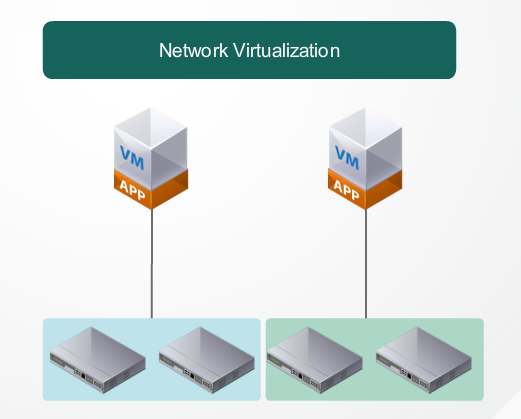
vSphere uses virtual NICs and virtual switches for virtual networking. Uplink adapters are physical NICs in each host that connect physical network to virtual network. Virtual switches regulate the traffic between the VMs.
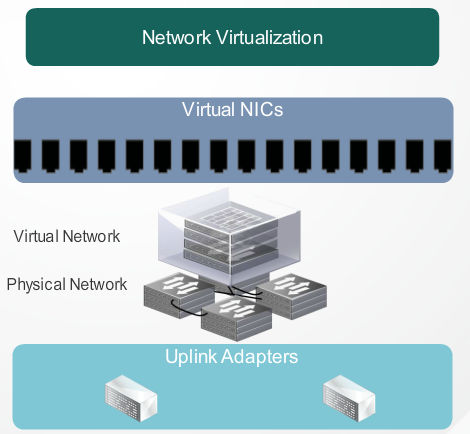
vSphere uses NSX as the network virtualization platform for SDDC (Software Defined Data Center). NSX allows you to treat your physical network as a pool of transport capacity. With network and physical resources attached to virtual machines with a Policy-Driven approach.
Virtual Networking
Virtual machines use the virtual networking to communicate with each other and with the physical world. Virtual networking is similar to physical networking. Each virtual machine on the ESXi host has a network address, with zero or more virtual network cards. The virtual network cards are connected to virtual switches which allows virtual machine on the same host communicate with each other using the same protocol that would be used with physical switches. Virtual switches also allows virtual machine to communicate with VMs on other host. The ESXi hosts are managed by vCenter server and leverage the network with features such as vMotion, High Availability and DRS.
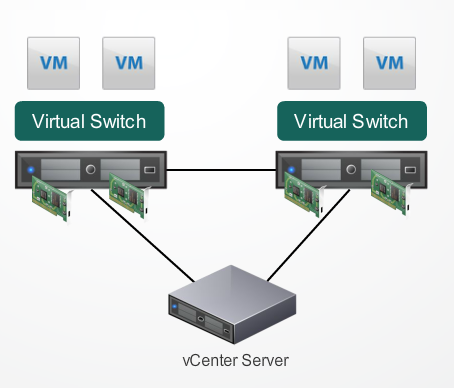
A virtual machine can be configured with zero or more virtual ethernet adapter, each of which has its own IP address and MAC address. As a result virtual machine has its own properties as virtual machines from a networking standpoint. vSphere supports a number of networking features including:
- Virtual LANs – Provide logical separation of Network Traffic and are used to isolate different sub-networks, such as a test or restore network
- Traffic Shaping – Is a feature that allows you to regulate and/or restrict the inbound and outbound network bandwidth of a group of virtual machines. This feature helps to reduce the congestion in a virtual network.
- Port Mirroring – Allows you to monitor a virtual machine’s traffic for troubleshooting or intrusion prevention. This feature allows you to capture the total traffic sent to or from a virtual machine for analysis.
- QoS and DSCP – Quality of Service and Differentiated Services Code Point are networking standards that allow network switches to prioritise certain network traffic over others. Example is prioritise the voice traffic from a call manager server so that its performance is improved.
- NetFlow – Is a network monitoring tool that determine the top talkers on a network. It also monitors other metadata about the communications that occur on the network.
- CDP and LLDP – Cisco Discovery Protocol and Layer Discovery Protocol are the discovery protocols that are used to identify the neighbouring physical switches. CDP and LLDP can also used to discover misconfigurations in network.
Virtual Switches
Virtual switches are the key networking components of vSphere virtual networking. You can use virtual Switches to attach virtual machines to the physical network. You can also use them to create isolated networks to be used during testing and development. Virtual switches help you to reduce network clutter by reducing the number of network cables plugged into your ESXi hosts. Virtual switches perform the following functions:
- Look up each frame’s destination MAC when it arrives.
- Forward a frame to one or more ports for transmission.
- Avoid unnecessary deliveries.
Virtual Switch Types
vSphere supports two main type of virtual switch i.e; Standard and Distributed switch.
Standard switch – can bridge traffic internally between virtual machines in the same port group and link to external networks. You can use standard switches to combine the bandwidth of multiple network adapters and balance communication traffic among them. You can also configure a standard switch to handle physical NIC failover. Standard switch models a physical Ethernet switch. The default number of logical ports for a standard switch is 120. Each uplink adapter associated with a standard switch uses one port.
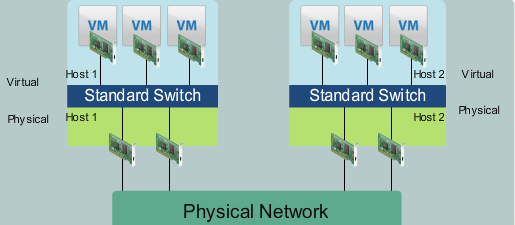
Distributed switch – VMware vSphere distributed switch provide a centralized interface from which you can configure, monitor and administer virtual machine access switching for the entire data center. Distributed switch provides simplified virtual machine network configuration, and enhanced network monitoring and troubleshooting capabilities. The networking configuration and management for all hosts that are associated with the Distributed switch is centralized in the vCenter server system.
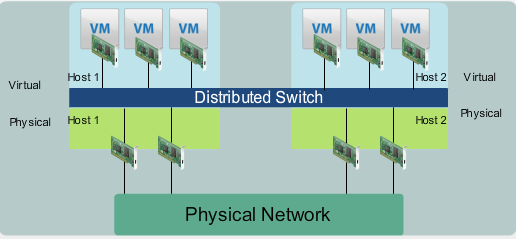
Introduction to NSX
NSX handle data across virtual switches without interacting with the physical switching environment. It exist in the ESXi environment and is independent of the underlying hardware. NSX is an approach to networking that enables Data Center managers to create model for the underlying physical network. It has the ability to be deployed on Any IP network, including existing traditional networking models and next generation fabric architectures from any vendor.
NSX capabilities extend to the following functional services:
- Logical switching – The logical switching capability of the NSX platform provides customers the ability to spin up isolated logical level 2 (L2) networks with the same flexibility and agility as that of virtual machines.
- Logical Routing – The distributed routing capability of the NSX platform provides and optimized and scalable way of handling East-West traffic within a data center. The amount of East-West traffic in the data center keeps growing and the new collaborative, distributed, and service oriented application architectures of the SDDC demands higher bandwidth for server-to-server communication.
- Logical Firewall – The NSX platform includes distributed kernel- enabled firewalling with line rate performance and virtualization. It also include identity aware with activity monitoring, among other network security features native to network virtualization.
- Logical Load Balancer – This service offers distribution of workloads across multiple servers, as well as high availability of applications.
- Logical Virtual Private Network – SSL VPN-Plus allows remote users to access private corporate applications. IP Sec VPN offers site-to-site connectivity between an NSX Edge instance and remote sites. L2 VPN allows you to extend your data center by allowing virtual machines to retain network connectivity across geographical boundaries.









